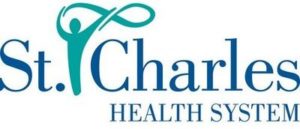 Locked-in syndrome has major ramifications on an affected person's life, but is it always fatal?
Locked-in syndrome has major ramifications on an affected person's life, but is it always fatal?
Jump To:
Locked-in syndrome is not immediately fatal on its own. But it generally leads to medical complications that shorten the lives of affected persons. According to a study published in the Orphanet Journal of Rare Diseases (OJRD), even a locked-in syndrome patient who is medically stable has only a 40% chance of living another 20 years, although more than 80% live 10 years or longer.
Though locked-in syndrome patients do not live as long on average as healthy people, their quality of life scores are surprisingly similar. With proper medical care and therapy, and the love and patience of friends and family, a person with locked-in syndrome can live a happy and meaningful life.
What Happens When a Person Gets Locked-In Syndrome
Locked-in syndrome causes full paralysis, affecting not only the four quadrants of the body but all voluntary muscles except the ones that control eye movement. An affected person cannot move their facial muscles, nor do they have voluntary control over the muscles in charge of actions such as swallowing and breathing. They require a tracheotomy and the use of an assistance device for breathing, as well as a feeding tube for nourishment.
Cognitive function, eyesight, and hearing are unaffected by locked-in syndrome. Patients can see and hear, and they have clear thoughts, opinions, feelings, and emotions, though they have difficulty expressing them or acknowledging things they hear and see. Those who learn effective communication techniques to interact with loved ones have the best chance of retaining a high quality of life.
How People Develop Locked-In Syndrome
People develop locked-in syndrome when they suffer damage to the pons, a part of the brain stem responsible for relaying signals from the brain to the spinal cord.
This step is a critical part of the process of muscle movement, and without it, your muscles never get the signal from your brain to do what you want them to do.
Even though you may think about moving your foot and try to move your foot, your foot will not move until it gets the nerve impulse from the brain to do so.
Since destroyed brain cells do not regenerate the way cells in other areas of the body do, damage to the pons is almost always irreversible. Very few people have made a full or even a significant partial recovery from locked-in syndrome.
Things That Cause Locked-In Syndrome
Locked-in syndrome has a few potential causes, some beyond anyone’s control, others preventable. When a person develops locked-in syndrome for an avoidable reason, a medical provider or facility is often to blame. In such situations, the affected person and their loved ones may have grounds for a medical malpractice claim.
The type of pons damage that leads to locked-in syndrome can happen for several reasons, but the two most common are bleeding in the brain and lack of oxygen to the brain. Either can result from a medical event such as a stroke or blood clot, or due to an infection or chronic condition (ALS is a common culprit).
Head trauma has been linked to locked-in syndrome, as well. Because the condition requires lifelong care and is very expensive to treat, it is worth investigating if another party’s negligence may have contributed to your loved one’s condition. If so, that person, not you or your loved one, should pay the bill.
Life With Locked-In Syndrome
Life with locked-in syndrome can be difficult, but it is not always the miserable existence pictured by people who have not experienced the condition. A patient has no physical capabilities and requires assistance for all daily living activities, even the ones most of us perform unconsciously, such as breathing.
Being able to see, hear, and understand things but not adequately respond to them can be a major source of frustration. Something else unaffected by locked-in syndrome is sleep. Patients have normal sleep/wake cycles.
Treatment of Locked-In Syndrome
Since locked-in syndrome is almost always a permanent condition, treatment is focused not on getting better but on adapting and learning to live, communicate, and have a meaningful life even without one’s physical faculties.
Communication is the most important part of adjusting to locked-in syndrome. Patients can learn to convey their thoughts to loved ones and caregivers via eye movement patterns, but it takes a great deal of effort on both sides to get comfortable with this process.
Brain Injury - News Articles

After a four-week trial, a New Jersey jury in Gloucester County found that the negligence of two emergency room doctors led to the continued abuse of an infant, who suffered permanent brain damage as a result. The jury awarded the child’s mother $45 million in damages because the doctors failed to diagnose the child’s broken
Read More
After nine months of waiting, Angela Marchant went into labor on July 22, 2016. She was rushed into the St. Charles Family Birthing Center, located in Bend, Oregon. The center is operated by the St. Charles Health System, which is one of the largest providers of medical care in the state of Oregon. According to
Read More